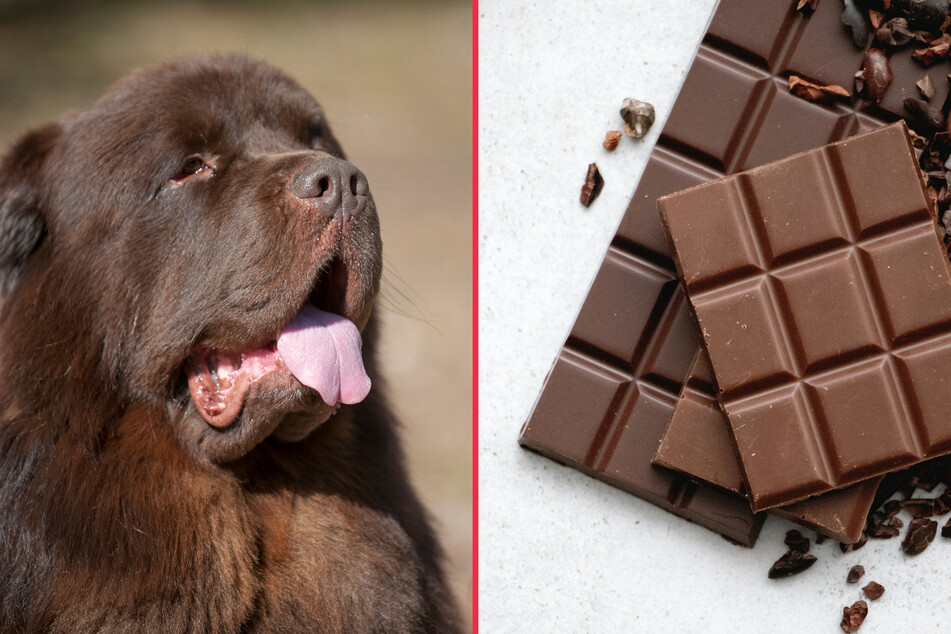Dogs and chocolate symptoms and treatment: What to do if you dog eats chocolate
Everyone knows that chocolate can be dangerous for dogs, but few know why it's so bad. Let's take a look at how much chocolate a dog can safely eat, what makes it dangerous for dogs, and what to do if your dog eats chocolate.

If your dog eats chocolate, you have great cause for concern. What is to us a tasty treat is to our canine companions a delicious but deadly mistake.
What makes it so dangerous for dogs to eat chocolate? Why is it that something so wonderful and flavorful can be so deadly and devastating for canine kind?
In this dog guide, TAG24 will take a look at dogs and chocolate. How much chocolate can dogs eat, what are the symptoms of a chocolate overdose, and what should you do if your dog eats chocolate? Let's find out.
Symptoms of dogs eating chocolate
Chocolate poisoning in dogs is a very serious, and possibly fatal, condition. As a result, you should be prepared to act if you realize that your dog has eaten chocolate and if it is displaying symptoms of poisoning.
Here are the most common symptoms of chocolate poisoning in dogs:
- Vomiting
- Extreme thirst and constant drinking of water
- Panting
- Restlessness and a sense of unease
- Diarrhea
- Increased urination
- Muscle tremors
- Heightened heart rate (not noticeable by the owner)
- Seizures
- Internal bleeding
- Possible heart failure (usually resulting in death)
Keep in mind that there are a variety of other symptoms and afflictions that may be causing the above-mentioned signs. Things like aspiration pneumonia can be caused by vomiting, as the dog struggles to breathe.
If your dog has eaten even a small amount of chocolate, it should go to the vet. If your dog shows any of these signs and you think it could have gotten into the cupboard, the vet is also the safest option.
My dog ate chocolate – how long before symptoms set in?
Symptoms of chocolate poisoning in dogs won't necessarily appear straight away, and can take hours to show themselves. This is because the chocolate takes some time to make its way through your dog's body, and gives you a critical and useful window to get your dog to the veterinarian if you notice that it has eaten chocolate.
Even mild and non-life-threatening chocolate poisoning can cause symptoms that last days upon days. Even if your vet sends you home, make sure to monitor those symptoms and take your dog back to the professionals if things deteriorate.

Why is chocolate toxic for dogs?
Chocolate is toxic for dogs due to both its caffeine content and a chemical called theobromine. The latter is the main cause of death and serious illness in doggos, though both of these chemicals are quite similar in their effects.
Dogs cannot metabolize both caffeine and theobromine, leading to a build-up in their body. Once this build-up gets to a certain amount, it will start to result in the symptoms of chocolate poisoning. If your dog ends up with too much theobromine or caffeine in its body, eventually organ failure will start to set in – most commonly heart failure.
The reason why chocolate is particularly bad is that the chemicals it contains act as stimulants, particularly impacting your dog's bloodstream, heart, and muscles.
How much chocolate can dogs eat?
Dogs will be okay if they have consumed a very small amount of chocolate, but that "small" amount is truly very tiny in comparison to how much we humans are used to eating. On top of that, the answer to this question really depends on the type of chocolate we're talking about – for example, dark chocolate is much stronger and much worse for your pet.
Dr. Sarah Wooten, who writes guides for dog owners on the VCA Animal Hospital's website, explains that chocolate used by bakers, as well as dark chocolate, is particularly deadly. According to the numbers she quotes, dark or baker's chocolate generally contains about 130–450 milligrams of theobromine per every ounce, as opposed to about 44-58 in milk chocolate. White chocolate is the least dangerous, with only 0.25 milligrams.
A dog would need to only eat a single ounce of the more dangerous stuff to be poisoned, but can eat between eight and ten ounces of milk chocolate. In white chocolate, those numbers get even bigger.
Are you worried? Well, first thing's first: if you're concerned, then off to the vet you should go! There is also an online service provided by Merck Manual that allows you to calculate whether your dog is in danger of chocolate poisoning.
How much chocolate can kill a dog?
As soon as you get above an ounce of dark chocolate or above eight ounces of milk chocolate, your dog is at very serious risk. This is why all chocolate poisoning should be treated seriously. Take your dog to the vet immediate, and don't try any home remedies. Anything over the numbers listed above is dangerous and could potentially cause death, so please be careful.
What to do if your dog eats chocolate

Many people will attempt to use home remedies to help their possibly chocolate-poisoned dog. This is not a good idea and should be avoided.
Your dog can get very sick from chocolate poisoning and should get immediate medical help.
If your dog eats chocolate, it should be taken straight to the vet to be checked out. Don't monitor for symptoms or wait, as once the symptoms set in, your dog could be in trouble.
My dog ate chocolate but is acting fine. What should I do?
It depends on the quantity of chocolate it ate, but we'd generally suggest that you err on the side of caution. While a tiny, miniscule amount of chocolate will likely do very little, it's best to be careful and take your dog immediately to the veterinarian. If that's not possible, keenly observe your dog, monitoring it for symptoms of poisoning.
In the end, even if it's extremely inconvenient for you, you should still take your dog to the veterinarian if it has eaten chocolate. Dogs are highly allergic to chocolate and can actually die from it, so it's best to be careful.
Cover photo: Collage: IMAGO/Panthermedia & Unsplash/Tetiana Bykovets



